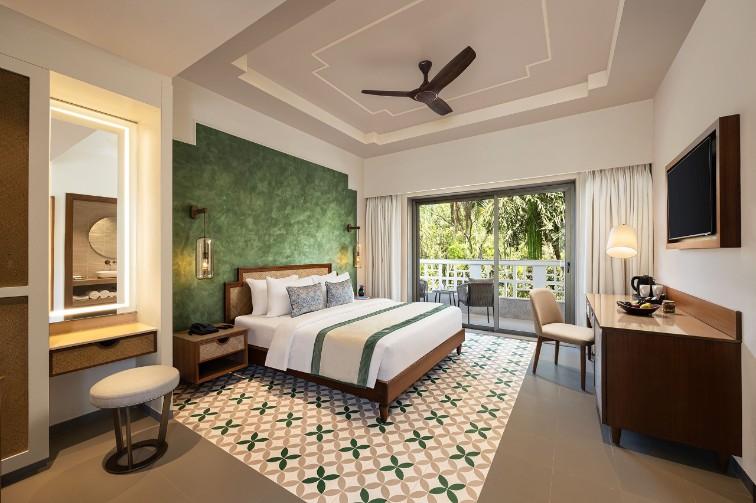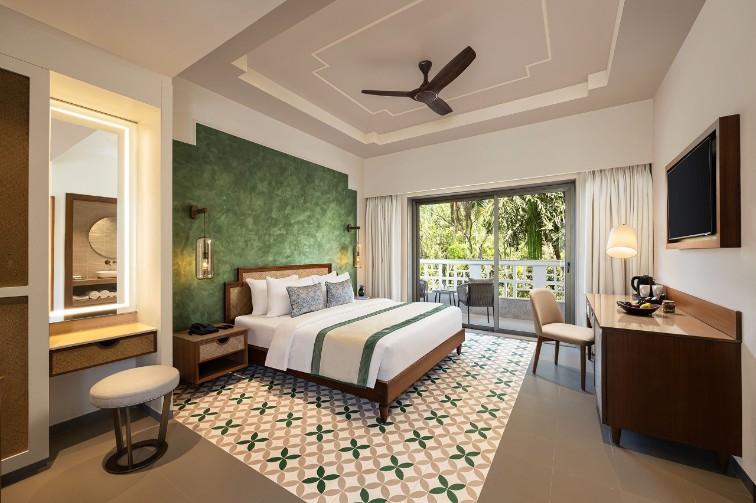
Hotels
•03 min read

India's cultural tapestry comes alive along its ancient corridors, where every winding road and pathway tells a story. These cultural corridors in India are not just physical routes but living testimonies to the country's vibrant history, bringing together diverse traditions, art, and cultural practices. In this exploration, we delve into the enchantment of these paths, shedding light on their historical roles and the profound impact they have had in shaping India's identity.
Cultural corridors are historically significant passageways that connect different regions, facilitating the movement of people, ideas, and traditions. These routes have been crucial in forging bonds between communities and fostering the exchange of art, language, and customs. For centuries, they have united diverse cultures and contributed to the mosaic of Indian identity.
The legacy of cultural corridors in India is deeply rooted in ancient trade routes, pilgrimage paths, and regional linkages. Historically, these paths were akin to the famed Silk Road and Spice Routes, instrumental in shaping not only India's marketplace but its cultural landscape as well. Over time, these corridors evolved, adapting to the flow of commerce and the fervor of devotional journeys, thereby enriching India’s regional cultural connections.
The Grand Trunk Road stands as one of the most celebrated historic trade routes in India. This iconic road served as a lifeline that enabled vibrant economic exchanges and the spread of art and language across vast lands. By opening doors to distant cultures, it played a pivotal role in connecting ancient Indian corridors, facilitating an enduring legacy of shared traditions and cultural prosperity.
India is home to a multitude of spiritual journeys, among which pilgrimage corridors like the Char Dham Yatra and the Buddhist Circuit are particularly revered. These routes are not only avenues for spiritual growth but also channels for regional cultural connections. Pilgrims have traveled these paths for centuries, deepening communal bonds and reinforcing the religious heritage that defines much of Indian tradition.

Long before the modern transportation era, traditional travel routes such as the Dakshinapatha and Uttarapatha connected ancient kingdoms and communities. These trails influenced the growth of Indian art and culture hubs, paving the way for intellectual and cultural prosperity. They remain a testimony to the depth of ancient Indian corridors and the timeless traditions that continue to inspire contemporary art and culture.
As you journey along the cultural corridors in India, you will encounter a wealth of cultural heritage sites. The Ajanta and Ellora caves, adorned with exquisite murals and sculptures, serve as silent storytellers of ancient artistic brilliance. Similarly, iconic monuments like the Mahabodhi Temple and Vishnupad Temple are imbued with spiritual significance and architectural mastery. These sites not only highlight regional cultural connections but also stand as beacons of India's illustrious past.
Cultural corridors have long played a fundamental role in nurturing regional cultural connections. Cities such as Jaipur, Varanasi, and Hampi are emissaries of India’s rich heritage, offering an immersive dive into local festivals, traditional crafts, and time-honored customs. These cultural hubs are vibrant intersections where the legacies of ancient Indian corridors meet contemporary creative expressions.
Today, there is a renewed push to preserve and celebrate these ancient pathways. Efforts to revive cultural corridors in India include various government initiatives like the G20 Culture Corridor, which aim to integrate digital museums and interactive experiences to showcase heritage. The evolution of technology has enabled immersive journeys that transport visitors directly into historical narratives, ensuring that the spirit of these corridors continues to thrive.
Despite the rich heritage and potential these corridors hold, challenges remain. Infrastructure development and environmental concerns must be balanced with the need to preserve the historical integrity of these routes. Additionally, the influx of tourism presents both opportunities and difficulties; while it spurs economic growth and international cultural diplomacy, it also requires careful management to maintain the authenticity of these sites. Innovations in cultural conservation can forge dynamic partnerships that honor our past while carving pathways for future collaborations.

"Did you know? India's cultural corridors not only connected regions within the country but also served as gateways for international trade and cultural exchange, influencing global history and identities."
India has over 40 UNESCO World Heritage Sites, along with many other cultural heritage sites that showcase its diverse history and traditions.
Religious corridors in India include pilgrimage routes like the Char Dham Yatra, Amarnath Yatra, and Buddhist Circuit, which connect significant spiritual destinations.
The top cultural states in India include Rajasthan, Uttar Pradesh, Tamil Nadu, Kerala, and Gujarat, all of which are celebrated for their rich heritage and traditions.
The G20 Culture Corridor digital museum is located at Bharat Mandapam in Delhi, showcasing heritage from G20 nations through immersive exhibitions.
In summary, the cultural corridors in India are more than mere pathways; they are vibrant embodiments of a history steeped in art, culture, and spirituality. From historic trade routes to revered pilgrimage paths, these corridors have left an indelible mark on India's heritage. As we appreciate the timeless stories and monuments along these routes, it becomes clear that preserving these legacies is essential for future generations to understand and cherish our shared history.